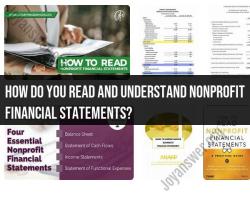How to list on NASDAQ?
Listing on NASDAQ involves a series of procedures and requirements that companies need to fulfill. The process is designed to ensure that the companies meet certain standards and provide sufficient information to potential investors. Here is a general overview of the steps involved in listing on NASDAQ:
Meet Initial Requirements:
- Ensure that your company meets the initial listing requirements set by NASDAQ. These requirements include factors such as financial stability, market value of publicly held shares, minimum bid price, and corporate governance standards.
Engage Advisors:
- Many companies seeking to list on NASDAQ engage financial and legal advisors to guide them through the listing process. These advisors can assist with the preparation of required documentation, compliance, and overall strategy.
Submit Application:
- Prepare and submit the listing application to NASDAQ. This application typically includes detailed information about the company's financials, business operations, management team, and other relevant details. The application is thoroughly reviewed by NASDAQ staff.
Undergo Review:
- NASDAQ conducts a comprehensive review of the application, assessing the company's compliance with listing standards and regulatory requirements. This process may involve multiple rounds of questions and responses.
Approval by Listing Qualifications:
- If NASDAQ's Listing Qualifications staff is satisfied with the company's compliance and information, they will recommend the listing to the Listing and Hearing Review Council.
Approval by Listing and Hearing Review Council:
- The Listing and Hearing Review Council will review the recommendation and make a final determination on whether to approve the company's listing.
Market Makers and Ticker Symbol:
- Once approved, the company will need to secure market makers. Market makers facilitate trading of the company's shares on the exchange. Additionally, the company will be assigned a ticker symbol.
Market Announcement:
- NASDAQ makes a public announcement regarding the company's approval for listing, and the company's shares become tradable on the exchange.
First Trading Day:
- The company's shares begin trading on NASDAQ on the scheduled first trading day.
Post-Listing Obligations:
- After listing, the company must adhere to ongoing disclosure and compliance requirements, including regular financial reporting, corporate governance standards, and timely disclosure of material events.
It's important to note that the specific requirements and procedures may vary, and companies should refer to the latest guidelines and regulations provided by NASDAQ. Engaging legal and financial professionals with expertise in securities regulations and exchange listings is often advisable to navigate the complexities of the process. Additionally, companies considering listing should be prepared for ongoing compliance responsibilities and transparency requirements associated with being a publicly traded company.
What are the steps involved in listing a company on NASDAQ?
Listing a company on the NASDAQ involves several key steps:
Preparation:
- Company Selection: Determine if your company meets the financial and corporate governance requirements for listing on the NASDAQ.
- Choose a Market Tier: Decide which NASDAQ market tier (Global Select, Global Market, or Capital Market) best suits your company's needs and eligibility.
- Select an Underwriter: Hire an investment bank to act as your underwriter and lead the listing process.
- Gather Information: Prepare all necessary information about your company, including financial statements, business plans, and corporate governance documents.
Application:
- File a Listing Application: Submit your application electronically through the NASDAQ Listing Center.
- Pay Listing Fees: Pay the required fees to NASDAQ for reviewing your application.
- Engage with NASDAQ Staff: Address any questions or concerns raised by NASDAQ during their review process.
- Investor Roadshow: Meet with potential investors to generate interest in your company's stock.
Approval and Listing:
- Receive Approval: NASDAQ will notify you if your application has been approved.
- Set an Offering Price: Determine the price at which your shares will be offered to the public.
- IPO Execution: Complete the initial public offering (IPO) process, including marketing, order book building, and pricing.
- Commence Trading: Your company's shares will begin trading on the NASDAQ market.
Post-Listing Requirements:
- Compliance: Maintain compliance with NASDAQ's continuing listing requirements, including financial reporting and corporate governance practices.
- Investor Relations: Build relationships with investors and analysts to maintain market awareness and liquidity.
- Corporate Governance: Continue to uphold high standards of corporate governance to ensure investor confidence.
Additional factors to consider:
- Timing: The listing process can take several months, so plan accordingly.
- Costs: Listing fees, legal fees, and other expenses can be significant.
- Market Conditions: Market conditions can affect the success of your IPO.
Resources:
- NASDAQ Listing Center: https://listingcenter.nasdaq.com/
- NASDAQ Listing Requirements: https://www.nasdaq.com/solutions/listings/list-your-company
- Investopedia - NASDAQ: https://www.investopedia.com/terms/n/nasdaq.asp
It is important to consult with experienced professionals, such as investment bankers and legal counsel, throughout the listing process to ensure a successful outcome.













